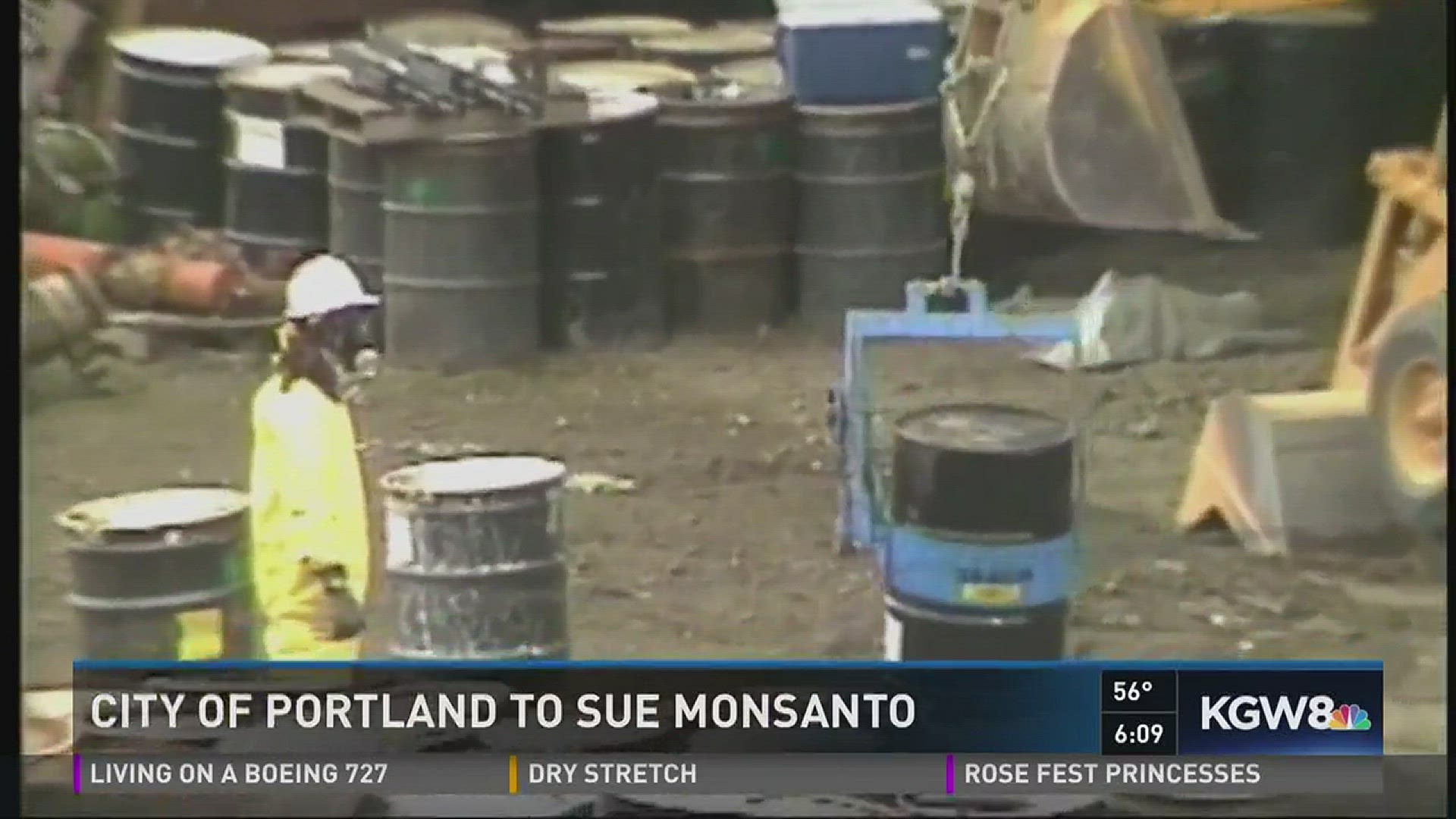PORTLAND, Ore. -- The city of Portland unanimously passed a resolution authorizing City Attorney Tracy Reeve to sue the Monsanto Company for contaminating Portland waterways with PCBs.
PCBs are cancer causing chemicals that last for many decades in the environment.
Reeve says the city has already spent a significant amount of public money to clean up the PCB contamination in the Willamette River and Columbia Slough and will continue to do so. It has known for years of the contamination.
“In our case there are PCBs widely distributed throughout Portland Harbor and that’s one of the main reasons it was listed as a superfund site back in December of 2000,” said Travis Williams, executive director of Willamette Riverkeeper.
According to the city attorney, Monsanto was the sole U.S. manufacturer of PCBs and manufactured over 1 billion pounds of PCBs between the 1930s and the 1970s, when Congress banned PCBs. Reeve says Monsanto’s own documents show the company continued to sell PCBs long after it knew of the dangers they presented to human health and the environment.
“Monsanto was the only manufacturer of PCB's in the United States from 1939 until PCBs were banned in the late 70's,” said Reeve. “During that time there's documentary evidence that Monsanto knew that PCBs were dangerous to the environment, that they migrated from waterways to fish, from fish to birds and also to people and they, nonetheless, continued to manufacture and distribute PCBs.”
Portland will join six other West Coast cities, including Seattle and Spokane, that have already filed federal lawsuits against Monsanto.
Monsanto released the following statement:
We are reviewing the lawsuit and its allegations. However, Monsanto is not responsible for the costs alleged in this matter. Monsanto today, and for the last decade, has been focused solely on agriculture, but we share a name with a company that dates back to 1901.
That company manufactured and sold PCBs that at the time were a lawful and useful product that were then incorporated by third parties into other useful products. Various municipalities built landfills on their bays and operated them for decades to deposit city waste and PCB-containing products into those waterfront landfills. Manufacturing and industrial facilities also operated in these areas, contributing to PCBs in the general area. If the third-party disposal or municipal disposal practices of the past have led four decades later to the state’s development of lawful limits on future PCB discharges into various bays and rivers through storm water, then those third parties and municipal landfill operators bear responsibility for these additional costs.

